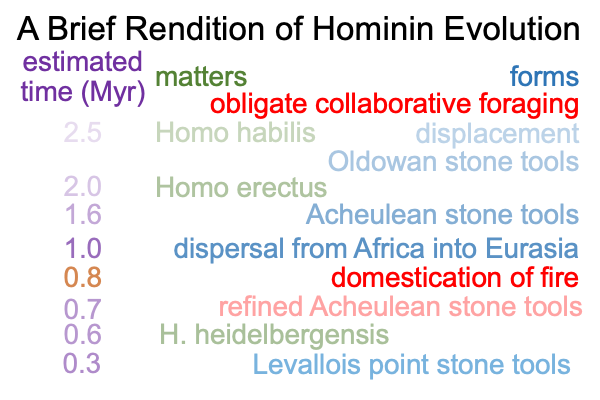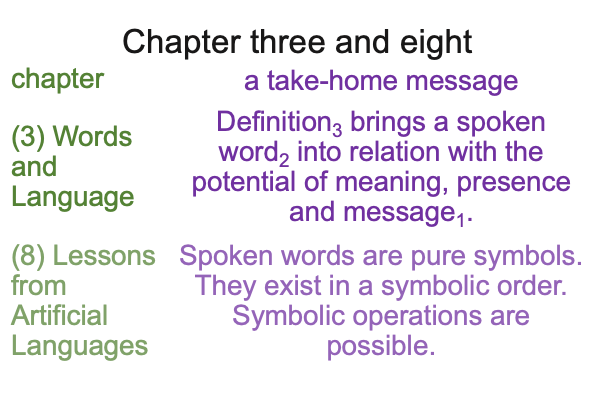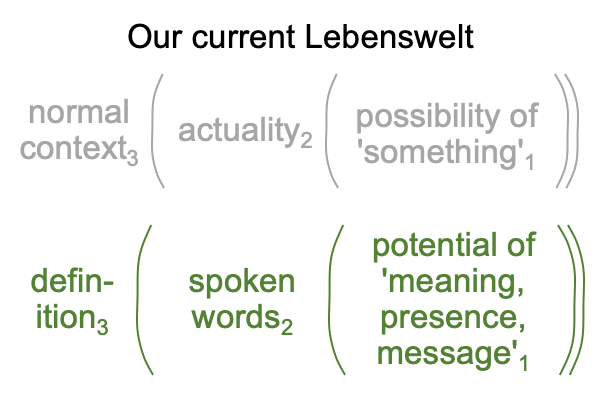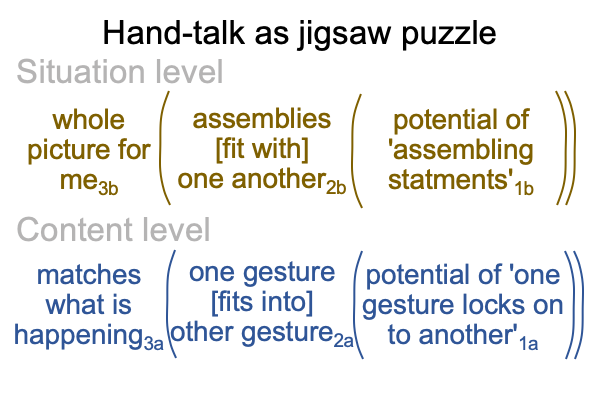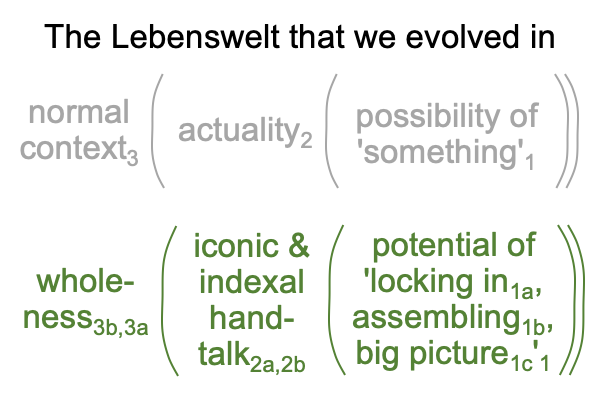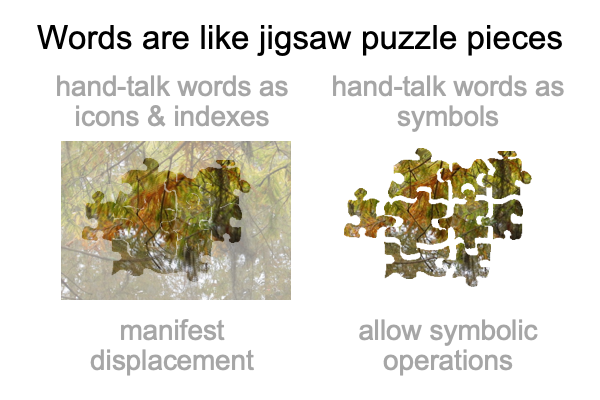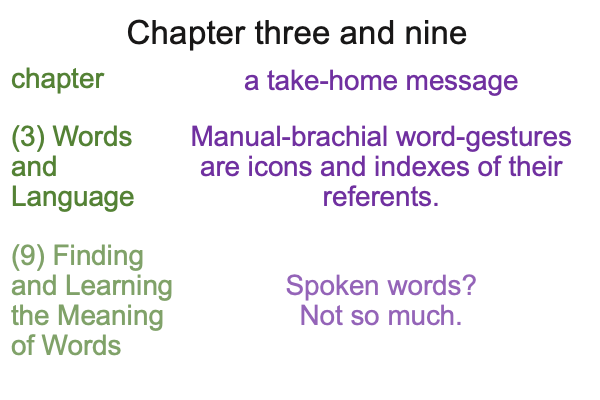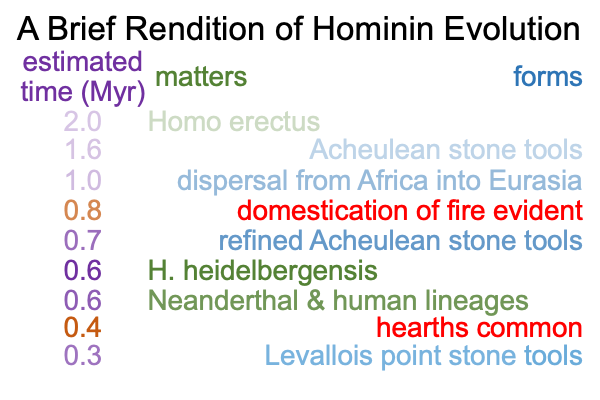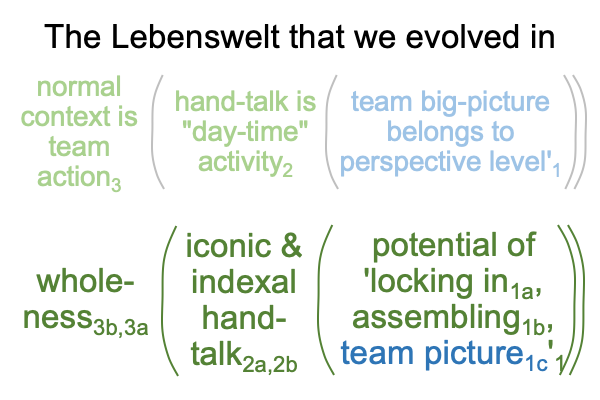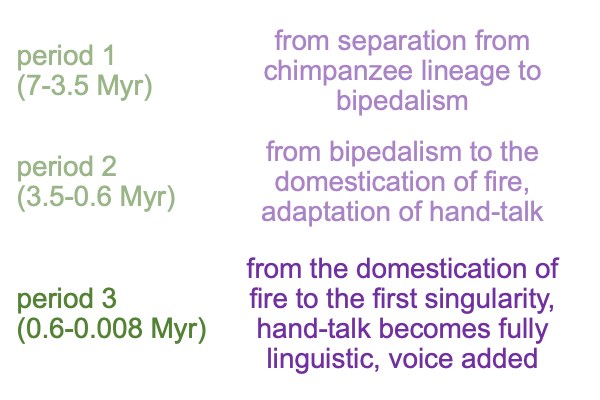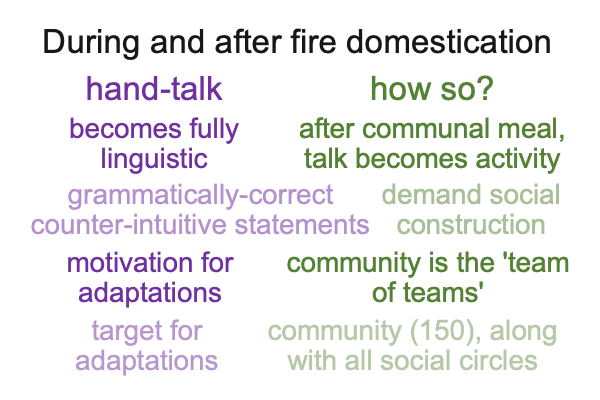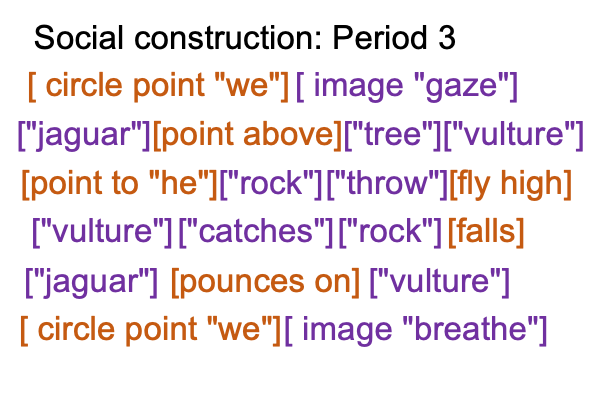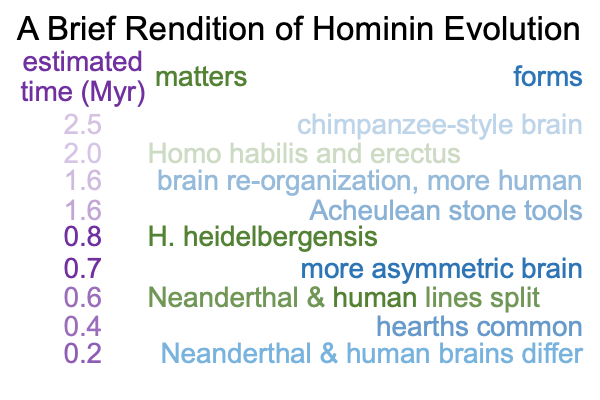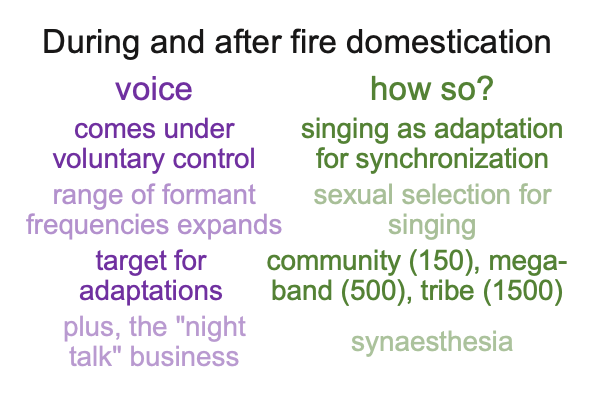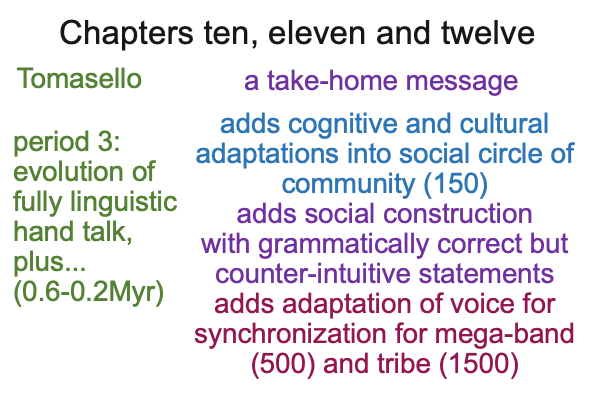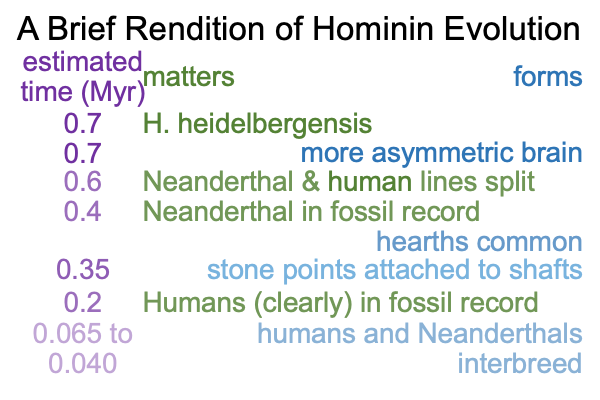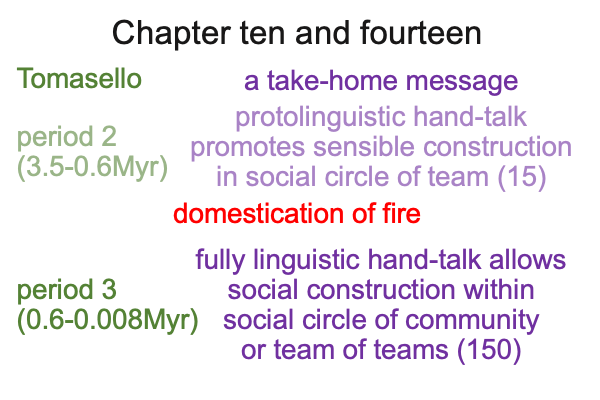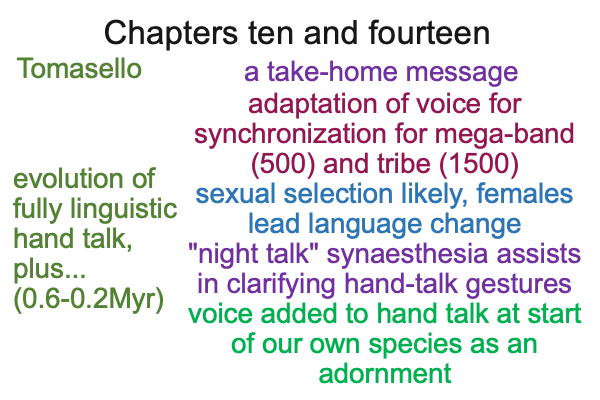Looking at Steven Mithen’s Book (2024) “The Language Puzzle” (Part 10 of 23)
0084 This raises the question, “Do the teams engaged in obligatory collaborative foraging know what they are doing?”
The answer is “no” and “yes”.
0085 By “no”, I mean that the following two-level interscope does not apply to the family (5), friends (5) or the band (50). Protolinguistic hand-talk is an adaptation to the team (15), just as the team is an adaptation to obligatory collaborative foraging.
Homo habilis and the later, and more brainier, Homo erectus, do not really know what a biologist says that they are doing. How can one picture or point to any of the terms in the explicit abstraction labeled obligatory collaborative foraging?
0086 Rather, these folk (if I can call them “folk”) try to exploit food sources that are seasonal and locally available. And, if they cannot, they walk to the next location that has food. Working in teams cultivates a certain type of thought pattern and this pattern has a lot in common with solving a jigsaw puzzle. One fits this or that piece together, then adds on pieces to assemble something akin to a statement. Then, one fits the statements together to fashion a big picture.
0087 Here is a picture of the hand-talk that adapts to operations within each team. Each team has its own protolanguage and, over generations, hominins get better and better at performing the following two-level interscope.
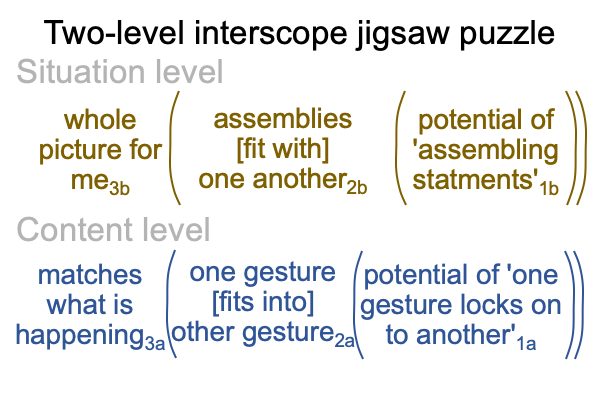
In other words, sensible construction is an adaptation to team activities.
0088 A Primer on Natural Signs and A Primer on Sensible and Social Construction offer other ways to appreciate how natural signs promote implicit abstraction and how working in teams encourages sensible construction. Manual-brachial gestures are natural signs that are not purely symbolic. They are icons and indexes. Sensible construction occurs on the content and situation levels. The perspective level is present, but constant. Such is the nature of each team.
0089 So, hominins do not know what they are doing.
At the same time, they do.
0090 By “yes”, I mean that there is good reason to suspect that teams are operational even before evolution of the Homo genus.
0091 I love Tomasello’s highly explicit terminology. Foraging means looking for food. Collaborative means that teams are engaged in extracting food in an ecology of mixed forest and savannah, where locally rich food resources are both widely separated and seasonal. Obligatory means that, if they don’t succeed, they will starve.
So, bipedal apes and early humans are always on the lookout for ways to exploit food sources that do not put them in conflict with other species. Every trick that works eventually supports a team.
0092 For example, when a large animal dies on the savannah, all sorts of predators and scavengers will have their fill, but they can’t eat everything and they rarely gnaw through the large bones. There is always something left to scavenge.
The appearance of Oldowan stone tools, dating slightly before the earliest fossils of the Homo genus, suggests that the hominins of the day found a trick. They could rapidly shatter one rock, by hitting it with another rock, in such a fashion that a sharp edge would be revealed. Then, that shape edge can be used to crack long bones to get the marrow fat and to scrape anything that is left on bones of an already scavenged carcass.
The work is dangerous because carcasses attract attention of both predators and other scavengers, such as hyenas, who are most unpleasant. So, a team must work together in order to allow one or two to manufacture the Oldowan sharp edge and to scrape tissue and break bones.
0093 This is the topic for chapter seven.
To me, making stone tools is all about two types of selection pressures.
Here is a picture.
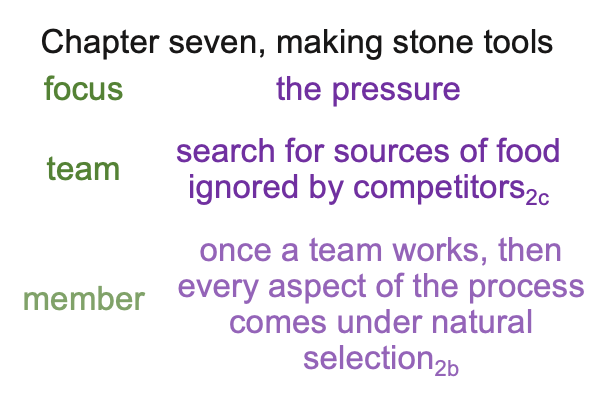
0094 There is one pressure that points to the team on the perspective level.
The normal context of a team endeavor3c brings the dyadic actuality, {hand-talk assemblies [holistically moving to] success}2c into relation with the possibility of ‘a big picture’1c. For hand-talk, the big picture1c is what team activities aim to accomplish1c. Success is the extraction of food2c.
0095 What does this imply about Oldowan stone tools?
Oldowan stone tools mark the start of a new style for extracting food in the ecology of mixed forest and savannah. As long as this style remains productive, a team within a band will coalesce in order to perform the extraction. The longer that a team exploits its opportunities, the more likely that aspects of the team activity will come under natural selection.
0096 This second pressure points to the individual within the team, operating on the content and situation levels. Over generations, individuals with dispositions and powers that comport with team success will reproduce more successfully. As such, the favored dispositions and powers more and more tend towards becoming adaptations,expressed phenotypically by individuals within the band.

